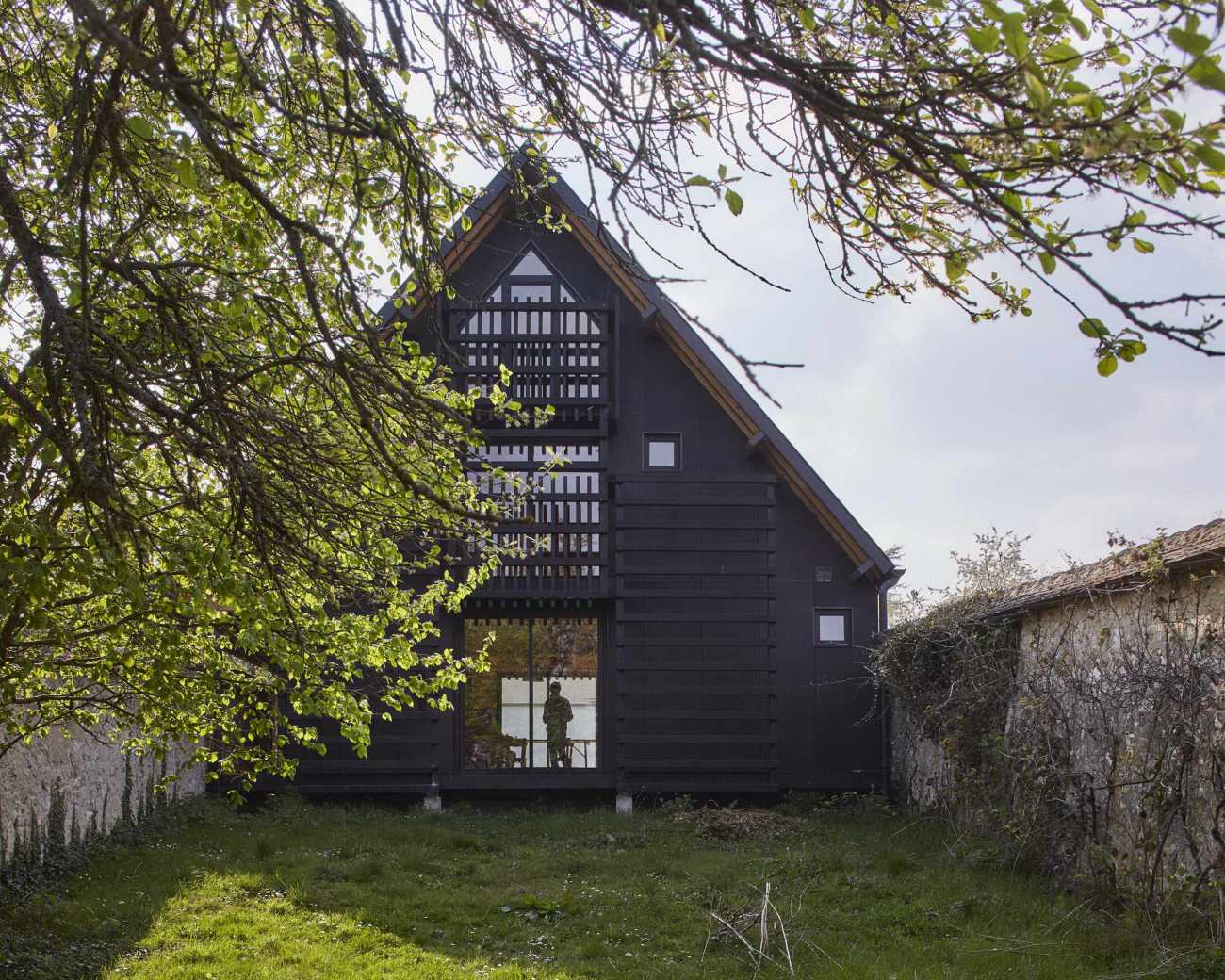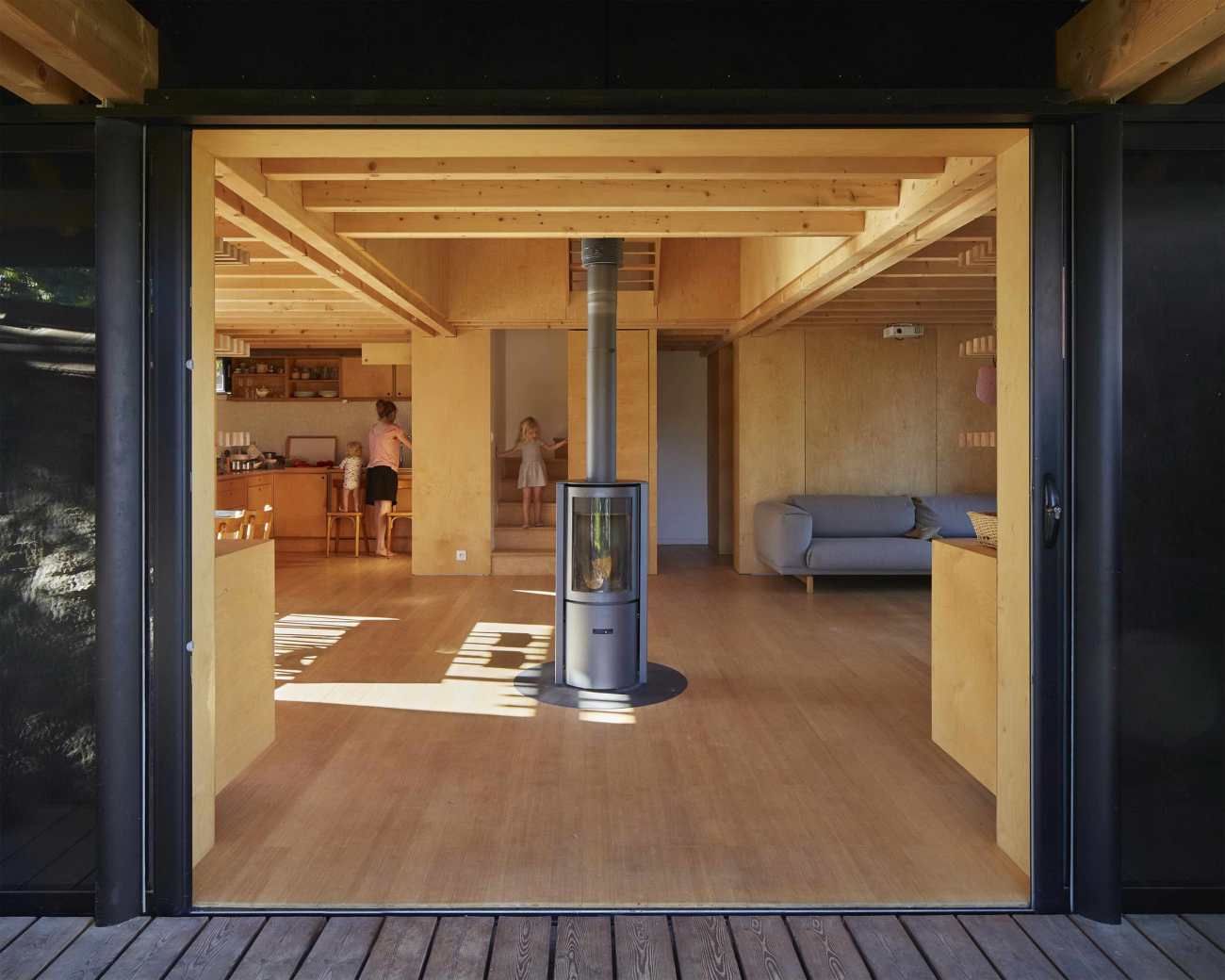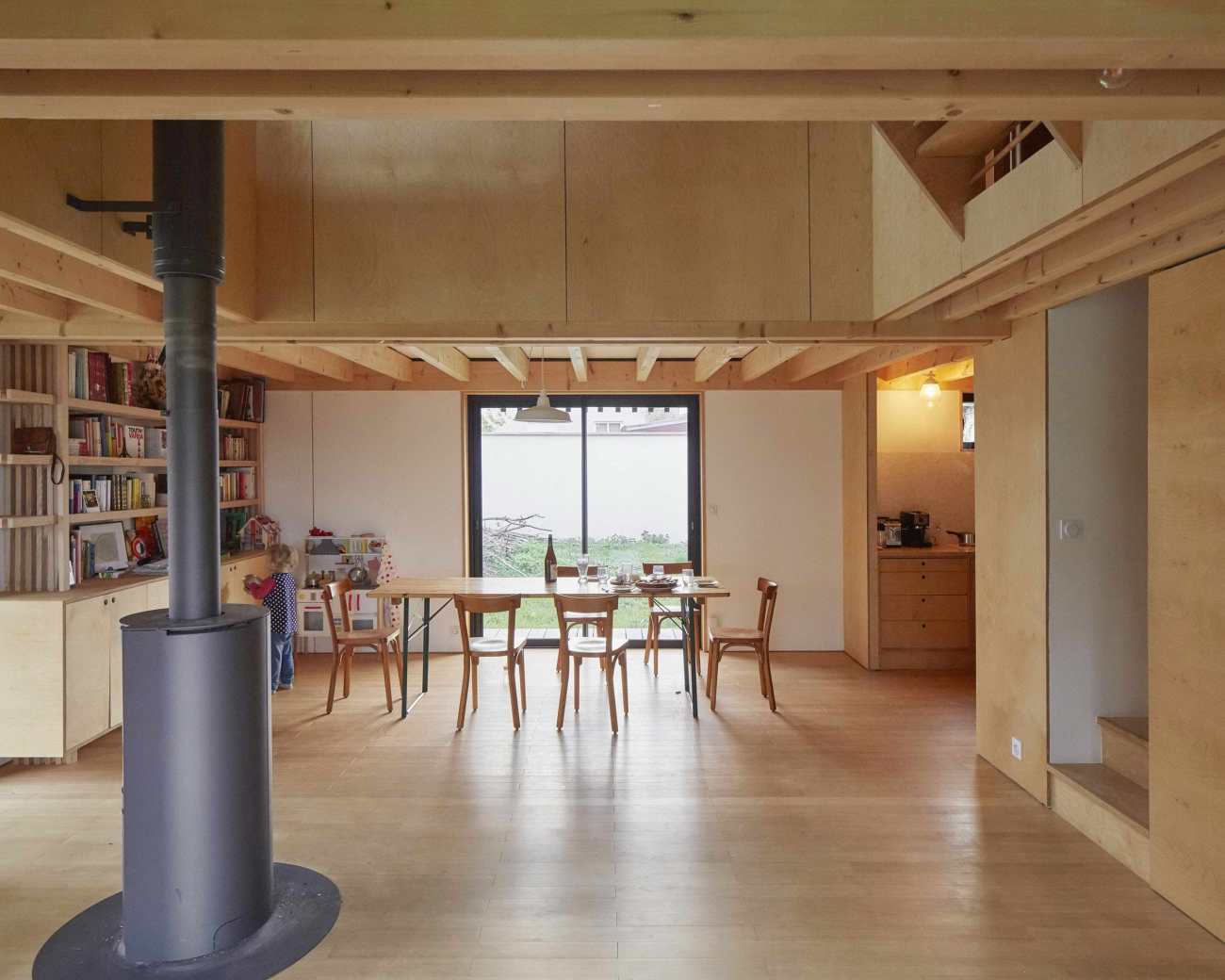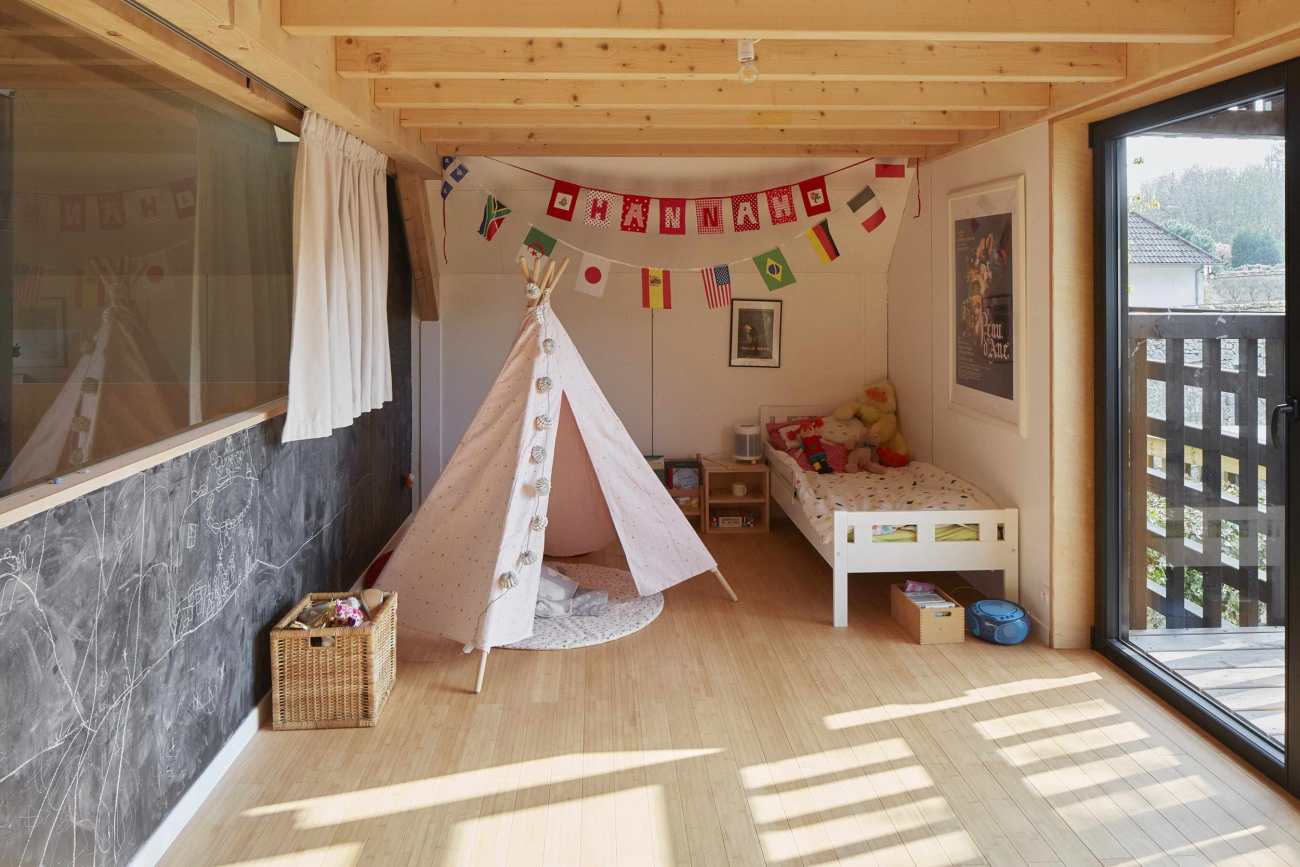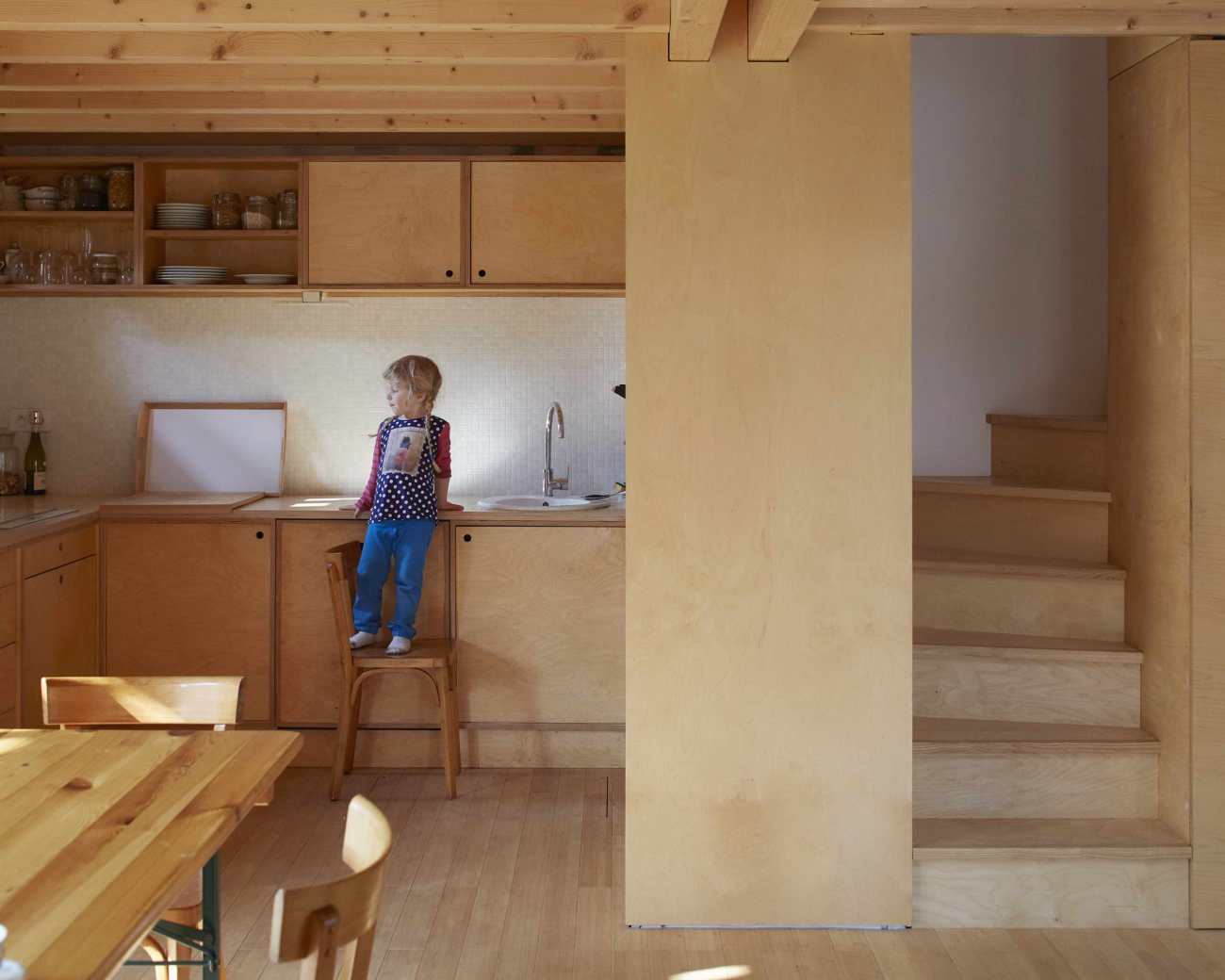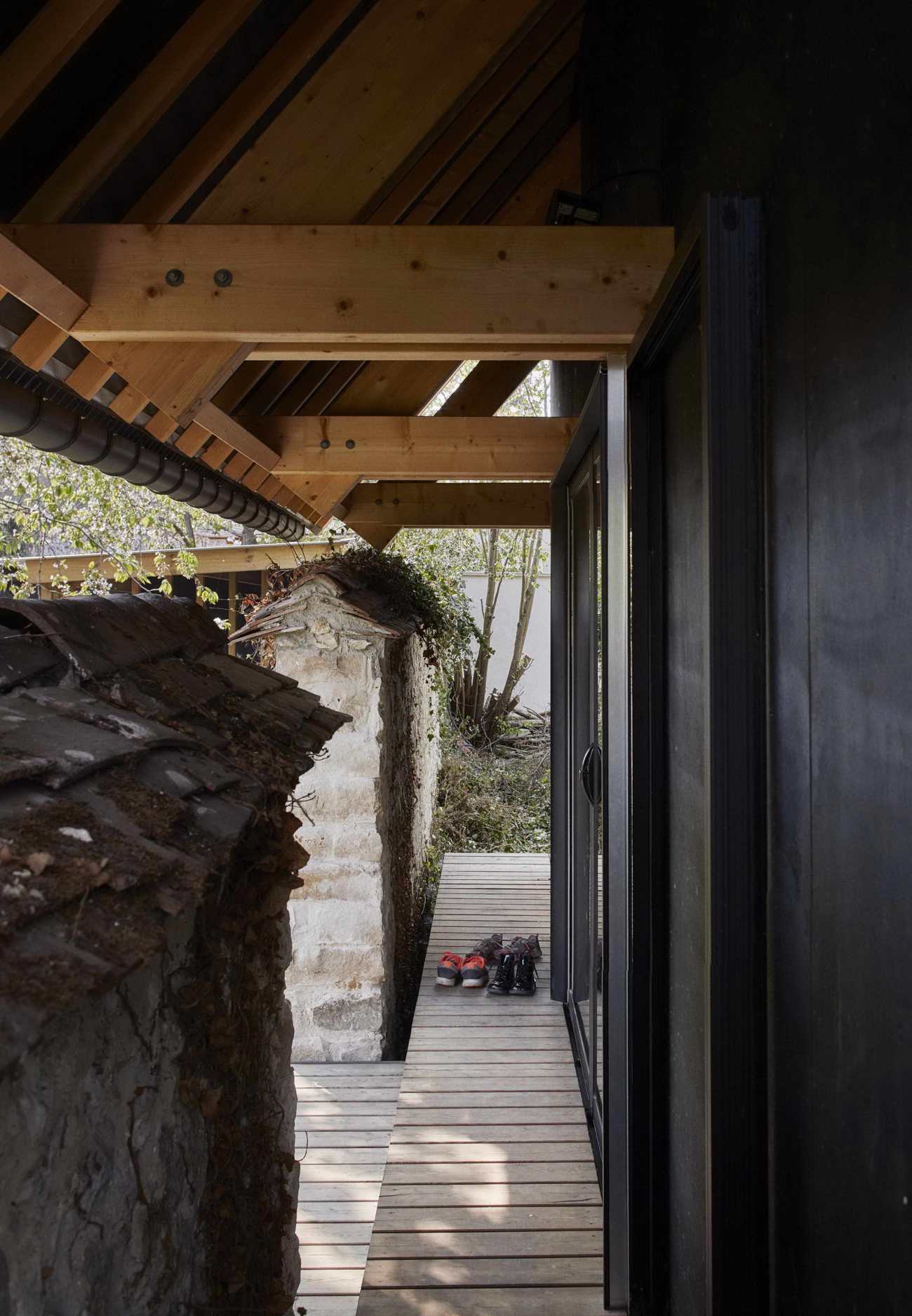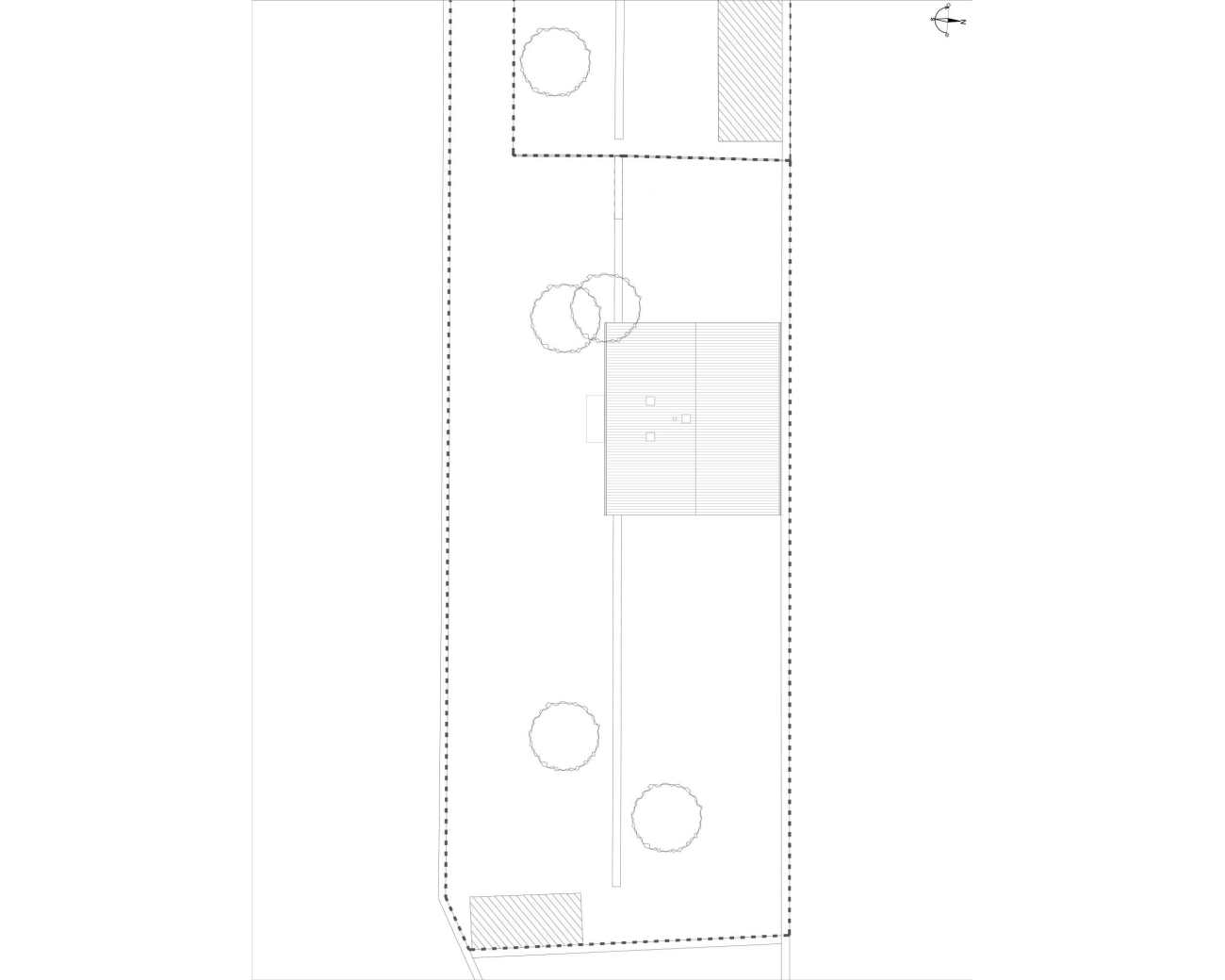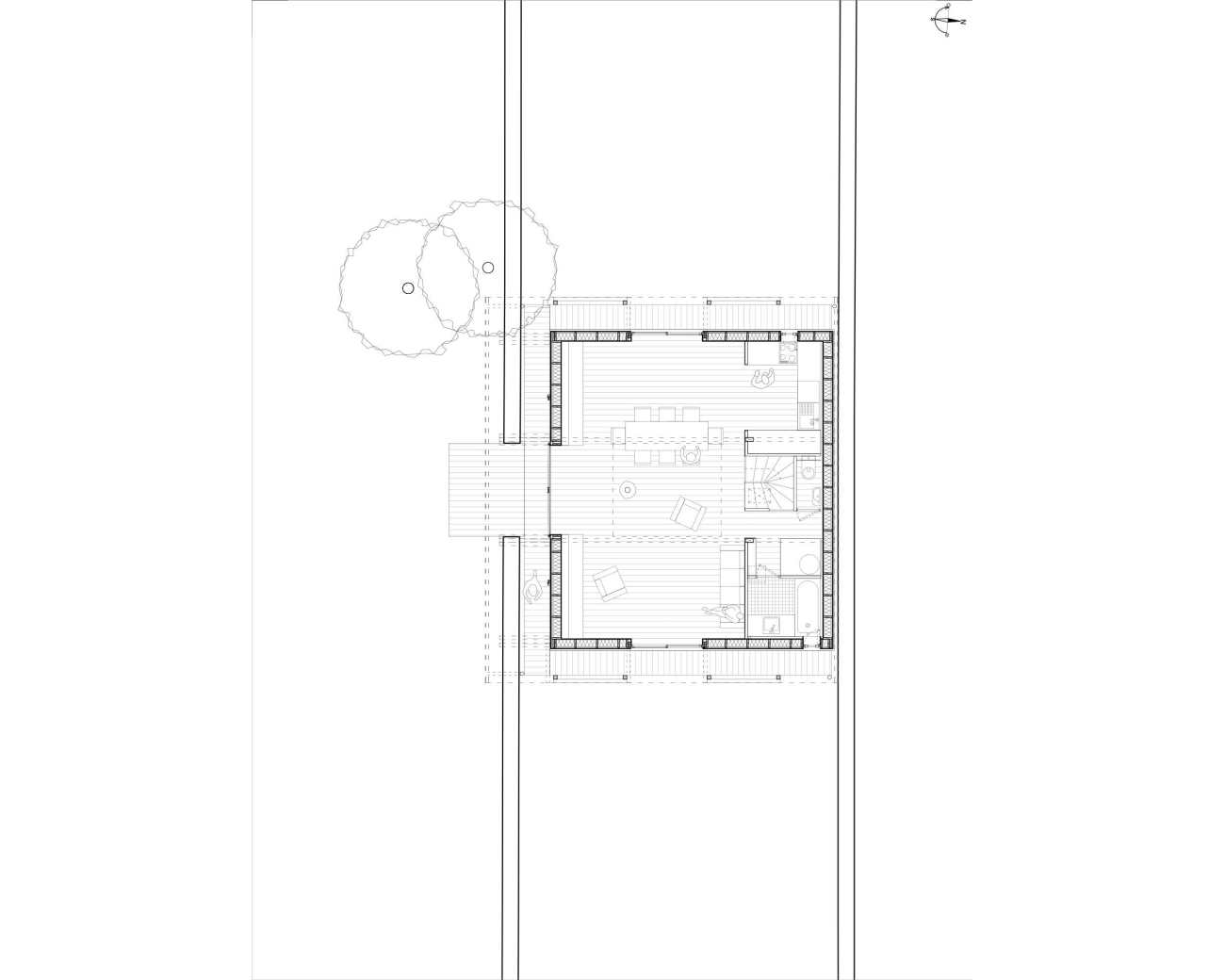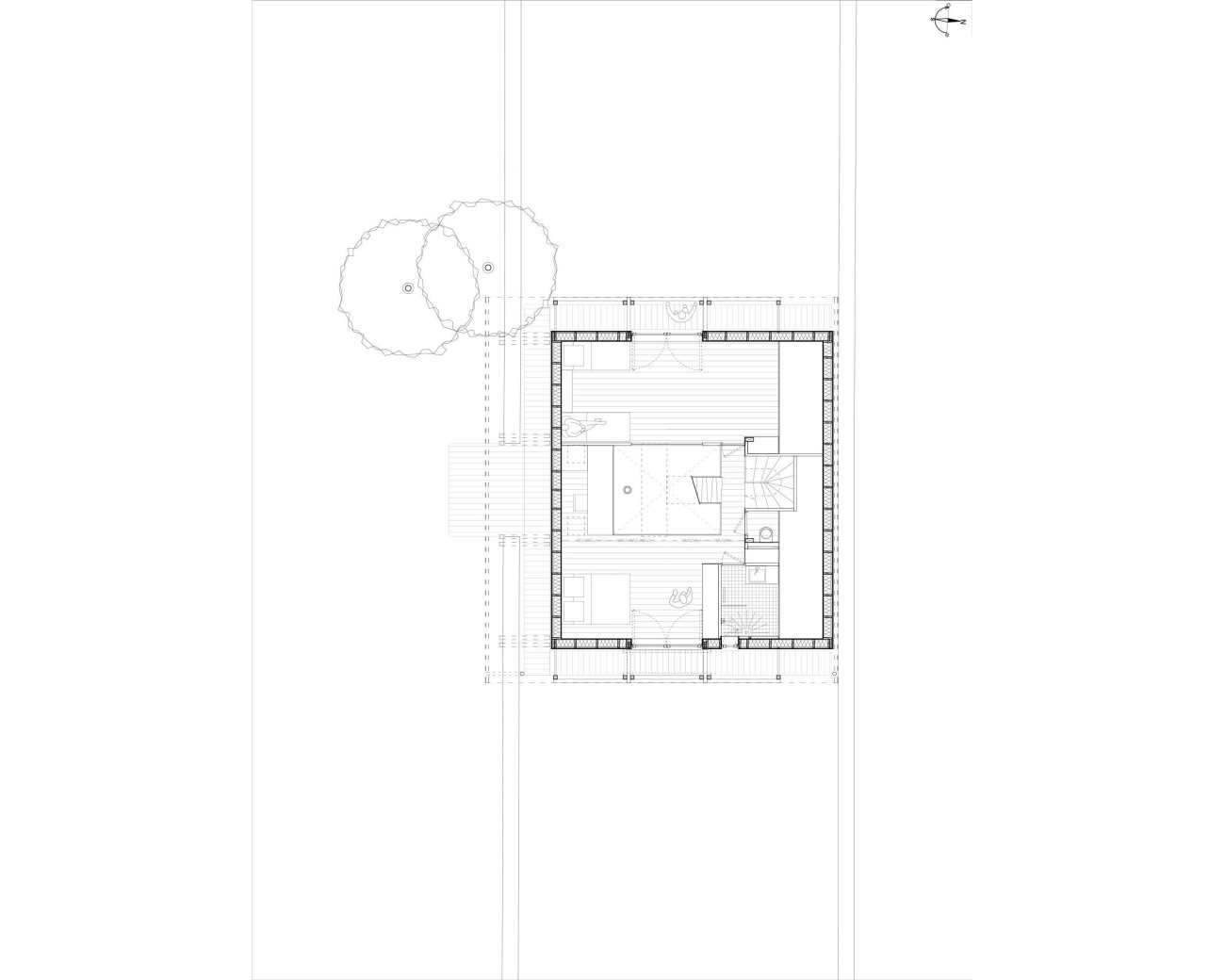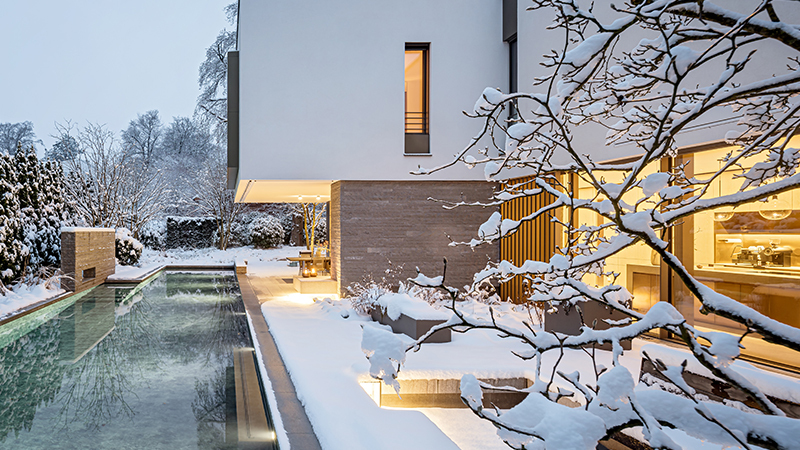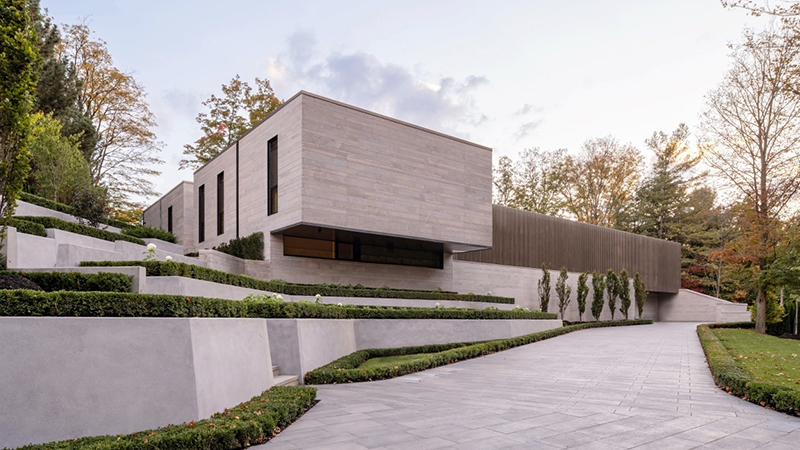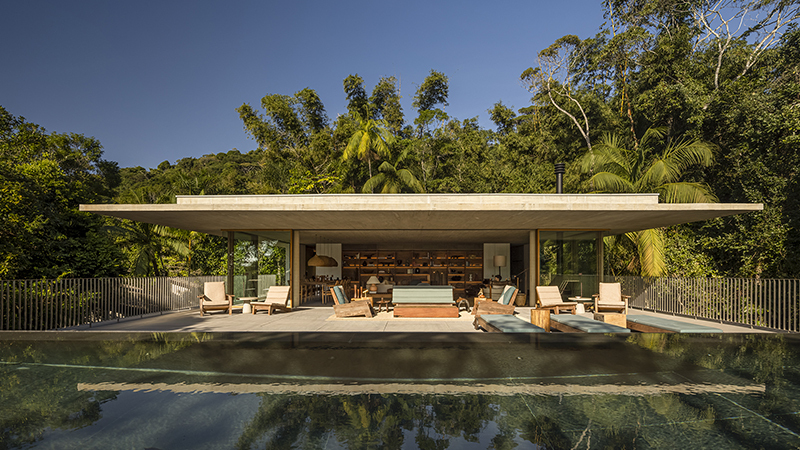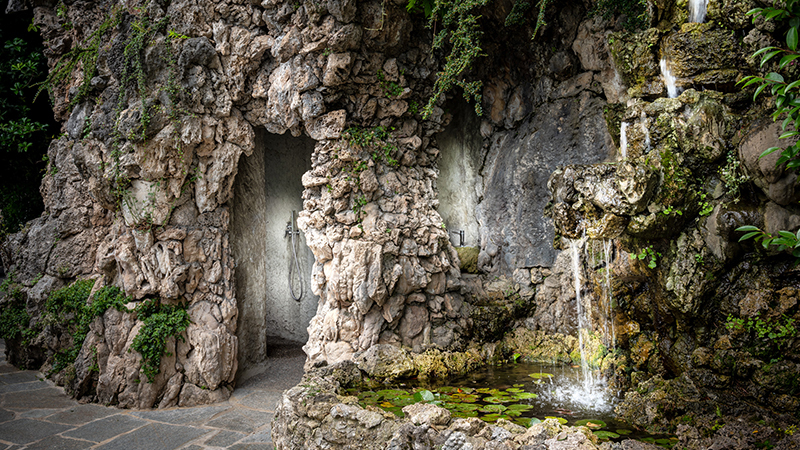当我们来到这块土地上时,发现有一块地被一堵石藤墙分隔成两部分。场地上美丽的诗意很大程度上来自于这面墙,来自于这面石墙,因为它在这个花园里的存在。
When we arrived on this land, we found a plot cut in two parts by a stone vine wall. Much of the poetics of the place came from this wall, from the stonework, because of its presence in this garden.
这堵墙在周围创造了一个生态系统:它创造阴凉,它保持热量并把热量传回来,它携带爬在石头上的植物。但这让我很烦!它分成了两部分,一块我们希望是单一开放的土地。当我们在寻找一种我们想要的建筑姿态时,我们很惊讶地意识到所有这些“存在主义”的问题,这些问题是这样一个物体——建造的和非生命的——可以产生的。它应该被摧毁吗?我们应该摆脱它,忘记它,重新创造一些新的东西吗?或者最多是重复使用这些石头?我们是否应该像发现它一样,完整地保存它,像尊重一棵树或文物一样“尊重”它?它应该像这堵锋利的墙一样,把每一块石头都保留在里面吗?这道墙的价值是多少?面对已经存在的事物,建筑师的自由是什么?这些问题对于有遗产的专业人士来说是经典和正常的吗?但我们是“新”的创造者,这堵墙不是传统意义上的文物。
This wall creates an ecosystem all around: it creates shade, it keeps calories and gives them back, it carries plants that climb on the stones. But it bothers me! It divides into two parts a land that we would have liked to be unitary and open. And it is very surprising to realize all the "existential" questions that such an object - built and non-living - can generate when we were looking for an architectural gesture that we wanted right. Should it be destroyed? Should we break free from it, forget it, and recreate something new? Or at best, reuse its stones? Should we keep this object intact, as we have found it, "respect" it as we would respect a tree or a heritage object? Should it be as radical as this sharp wall and keep every stone in it? What is the value of this wall? And what is the freedom of an architect in the face of what already exists? Are these questions classic and normal for a professional of heritage? But we are creators of "new", and this wall was not a heritage object in the classic sense of the word.
这堵墙(必须承认它相当笨重)的价值,严格地、完全地来自于它就在这里,存在着,并矗立在我们的干预之下。这个简单的存在事实让我们变得谦卑。作为未来居民的理解,除了将其作为这片土地上建筑干预的关键元素之外,没有其他选择。
The value of this wall (quite cumbersome, it must be admitted) came strictly and solely from the fact that it was here, existing, and standing before our intervention. And this simple fact of existence pushed us to humility. As the future inhabitants understood, there was no other choice than to consider it as a key element in the architectural intervention on this land.
 | 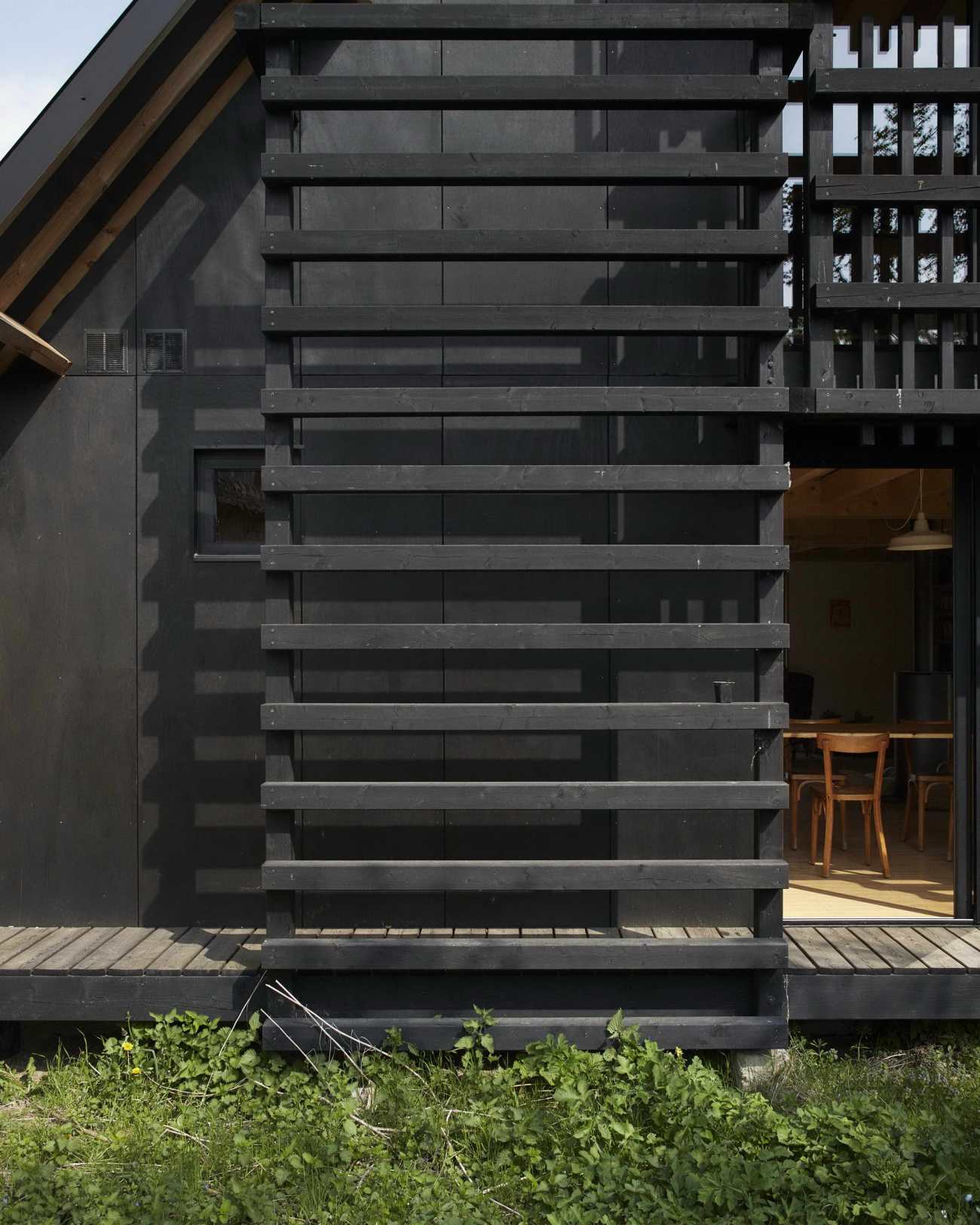 | 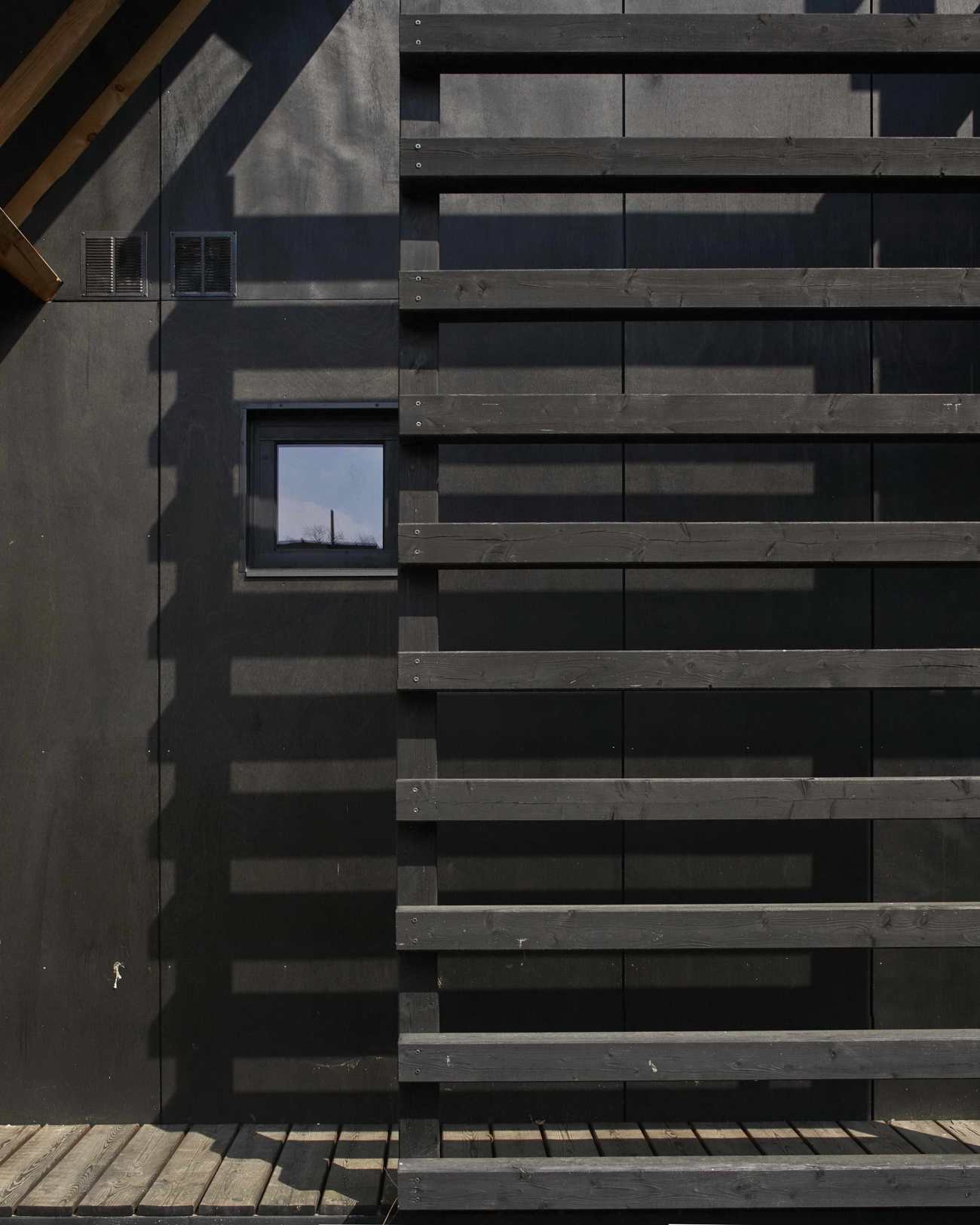 |
因此,房子只是对这面墙的干预,在葡萄墙的石头上向南开辟了一个单一的海湾,房子紧挨着这个开口。这个建筑吸引、分配和刺激了三个不同的花园,一个是早晨的,一个是中午的,一个是傍晚的,在一天中轮流接受阳光的照射。
The house is therefore simply an intervention on this wall. We have given ourselves the freedom to open a single bay to the south in the stone of the vine wall. The house is placed immediately behind this opening. The construction draws, distributes, and stimulates three distinct gardens, one of the morning, the one of noon, and one of the evening, taking their turn in the sun throughout the day.
 | 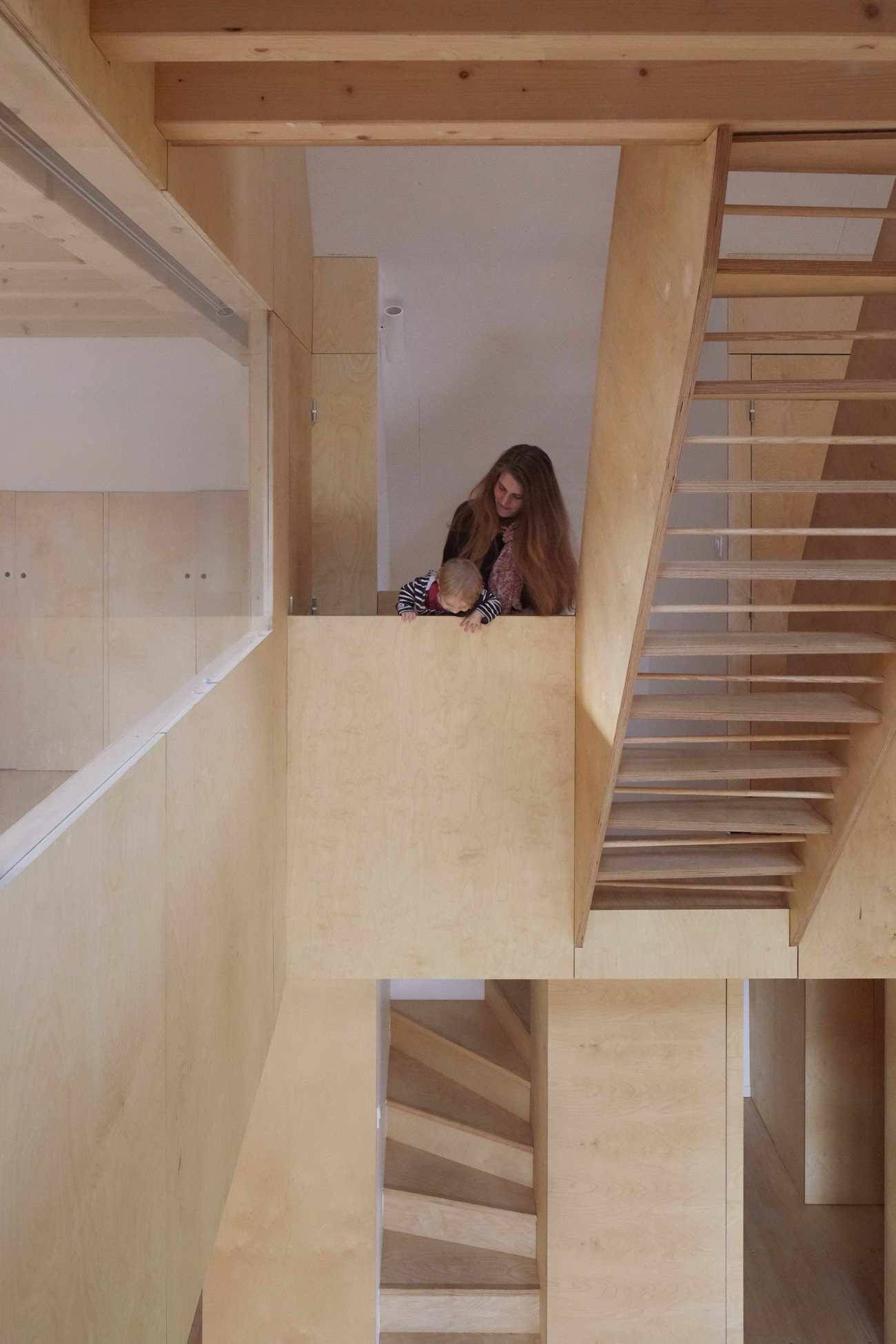 |
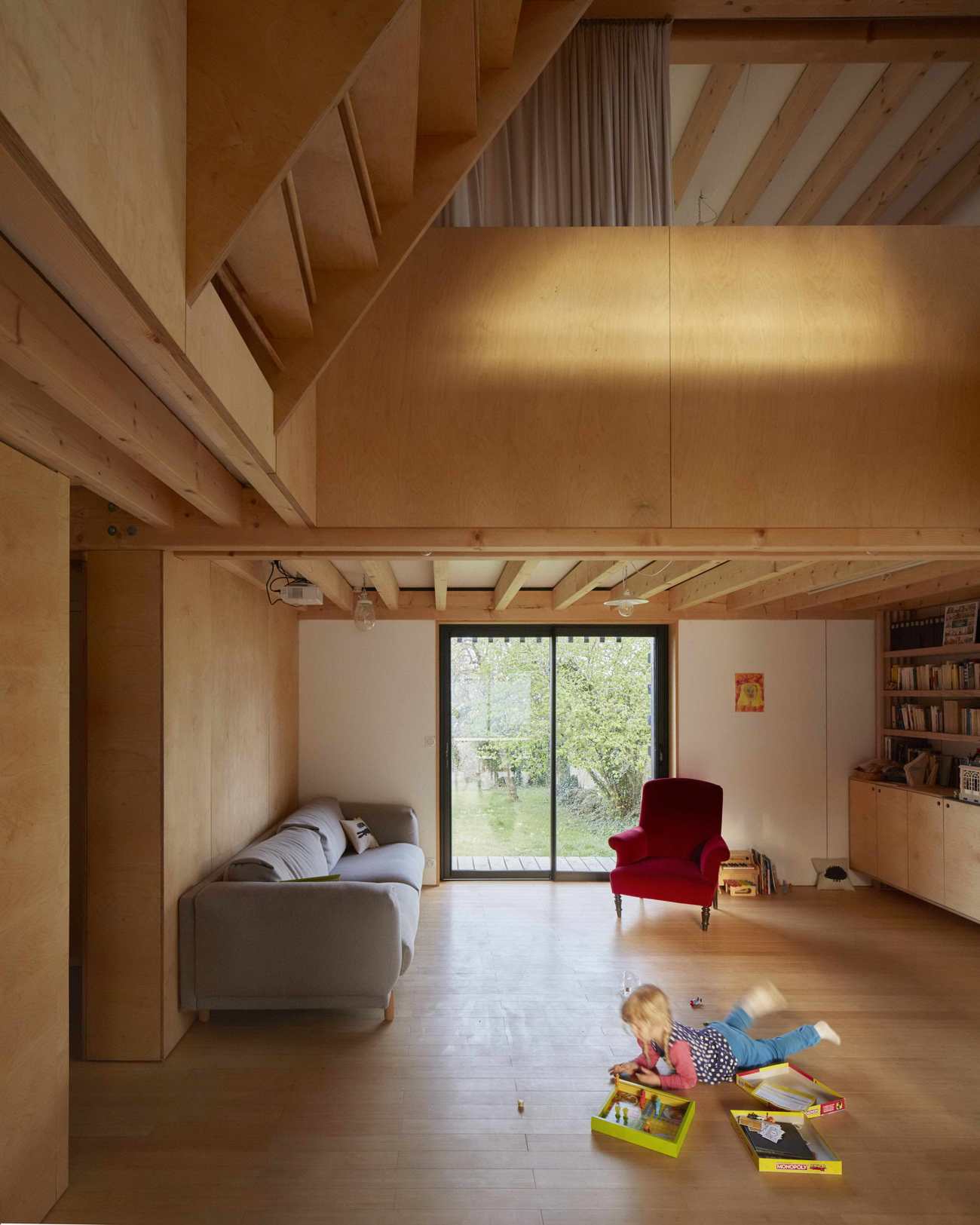 |  | 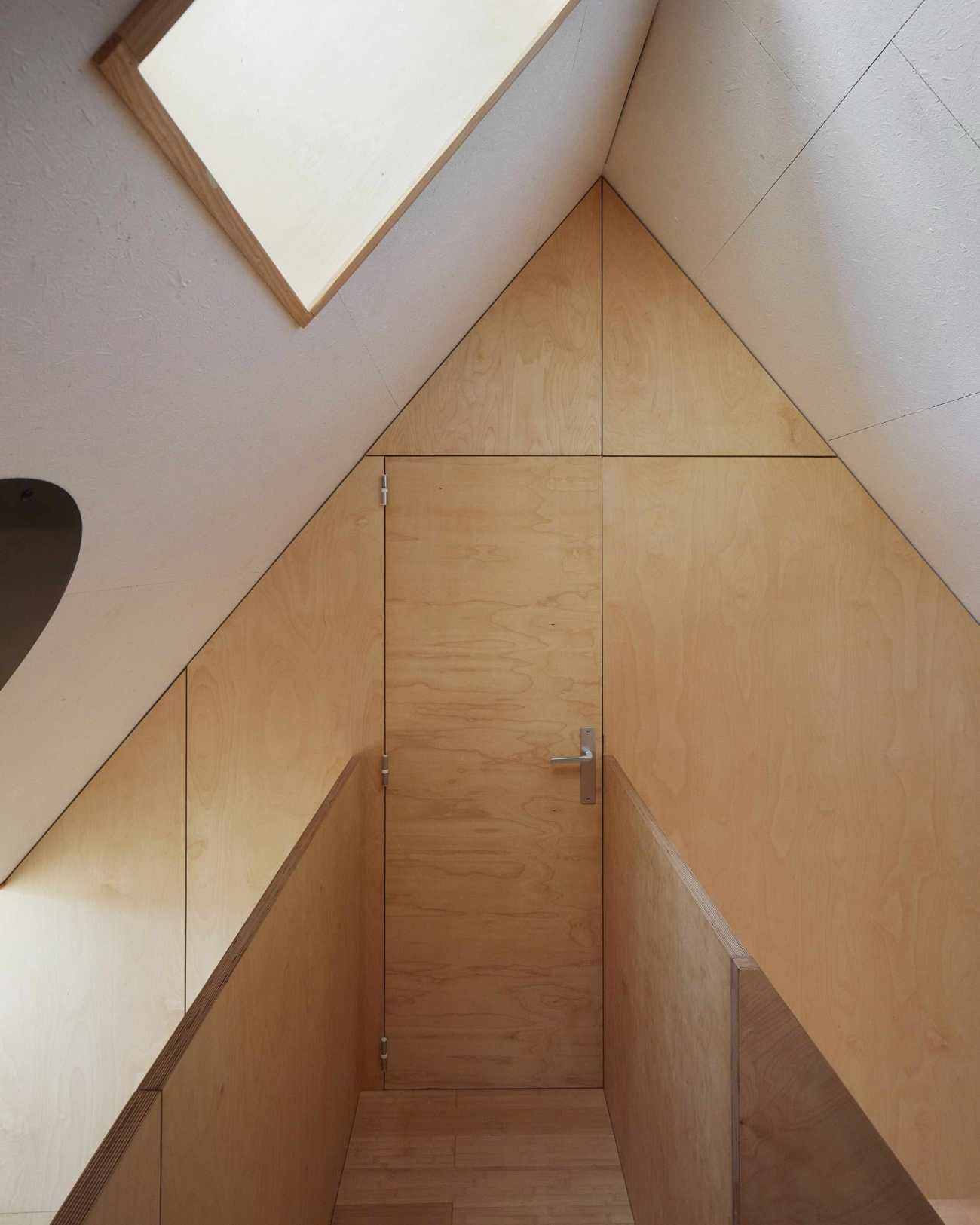 |
这三个方位上的外部通道,使这一建筑装置有了空气、厚度和流动性,促进了三个花园的连接。东面和西面的檐口,每个檐口都装有三根墙条,是相邻花园的垂直延伸。涂有黑色松柏油的房子在气势磅礴的屋顶下,覆盖着墙体,给这里带来了自己的诗意。房子的中庭作为一个可居住的、柔软的、舒适的空洞出现在粗糙的、不完美的墙体上的开口后面。
An external passageway on these three orientations gives air, thickness, and fluidity to this architectural device, and promotes the connection of the three gardens. To the east and west, the gables - each fitted with three wall bars - are vertical extensions of the adjacent gardens. The house coated with black pine tar under an imposing roof that covers the wall brings its own poetics to the place. The atrium of the house comes as a habitable, soft, and comfortable hollow behind the opening created in the rough and imperfect wall.
这个地方的新诗性包括了一点神秘感,这种神秘感来自于房子是隐蔽的,只能看到黑色的屋顶和中庭的腹部。这同样的神秘感来自于新与旧的共存,一直存在的东西和刚刚建成的东西--让我们无法准确而清晰地分辨它们。
This new poetry of the place includes a bit of mystery that comes from the fact that the house is hidden, that only the black roof and the belly of the atrium can be seen. This same mystery emanates from the coexistence of the new and the old - of what has always been present and what has just been built - let us not knowing exactly and clearly to distinguish them.
▽场地平面图 Site plan
▽入口层平面图 Ground floor plan
▽一层平面图 First floor plan
▽二层平面图 Second floor plan
▽屋顶平面图 Roof plan
▽东立面图 East floor plan
▽南立面图 South floor plan
▽西立面图 West floor plan
▽北立面图 North floor plan
Project name: The House Between the Walls
Design firm: arba
Site: Thomery / Seine-et-Marne
Surface: 108m2
Budget: 266 000€ TTC
Matériaux: Longrines béton, sapin du nord, châssis aluminium, vêture CP et
goudron de pin, dalles MFP
Chauffage: Poêle à bois
Agencement: Contreplaqué de bouleau et frêne massif (égoïne).
Photo credit: Jérémie Léon
更新日期:2020-11-19 14:45:56
非常感谢 arba 带来的精彩项目, 查阅更多Appreciations towards arba for sharing wonderful work on hhlloo. Click to see more works!

